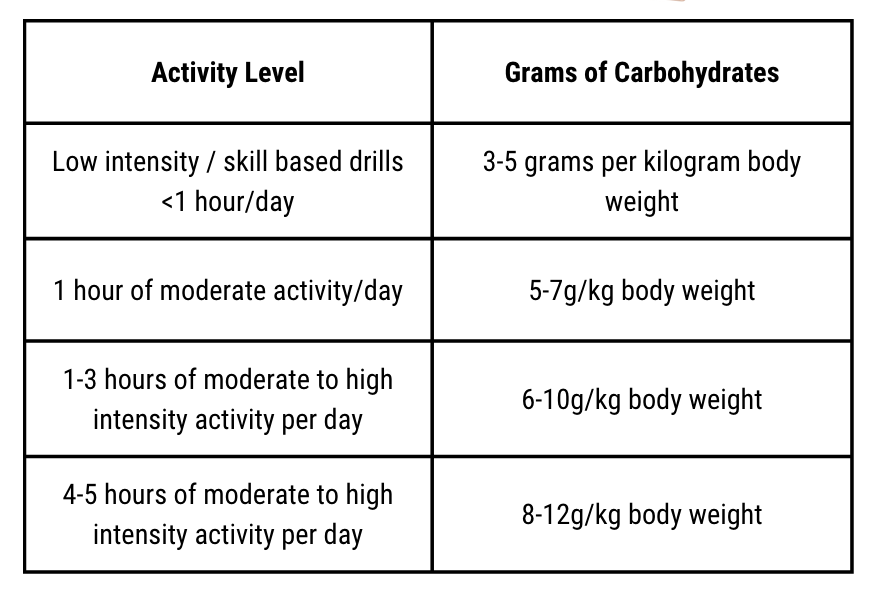Carbohydrate Guide for Active Individuals
Are carbohydrates “bad” for you?
How much do I need?
Should I use the zero sugar sports drink?
What about fruit?
These are questions I hear every single day in my practice and more often than not, I observe athletes and active individuals under consuming carbohydrates.
The truth is, carbohydrates are the primary fuel source for our bodies during exercise. If we don’t have enough, our body begins to rely on fat for fuel, which is not converted into energy very quickly, leading to fatigue, “hitting the wall,” and performance detriment.
A 2014 review of studies on carbohydrate intake during endurance events found that 82% of the studies showed significant performance improvements from carbohydrate intake during the events.
Additional studies have shown that low carbohydrate availability may reduce training intensity during both high intensity and moderate intensity exercise.
So, how much carbohydrate do you need?
That depends on your activity level. The longer and more intense the exercise, the more your body needs.
If you reference this chart, a 150 lb individual training around 1 hour per day needs a minimum of 204 grams per day.
What does that look like? Download my free carbohydrate guide here.
Are some sources better than others?
Carbohydrates are broken down into two groups: complex and simple.
Simple carbohydrates are very quickly digested by the body, which provides a quick rise in blood sugars and therefore, quick energy. These are great to use right before training sessions, during long sessions, or between double sessions.
Examples include: Crackers, pretzels, cereals, granola bars, honey, energy gels, fruit chews, sports drinks, etc.
Complex carbohydrates are more slowly digested by the body, which provides a slower, more sustained rise in blood sugar, and therefore longer lasting energy. These are great to use at mealtimes to give us more sustained energy levels and prevent major ups and downs in our energy levels.
Examples include:
Whole grains: brown rice, quinoa, steel cut oats, etc.
Starchy vegetables: potatoes, sweet potatoes, peas, corn, etc.
Legumes: Beans, lentils, chickpeas.
If you are looking for customized nutrition guidance, sign up to work with me here.
OR check out my recipe book for active individuals, which provides recipes with a balance of protein, carbohydrates, and fats here.
PMID: 3074755, 34001184


